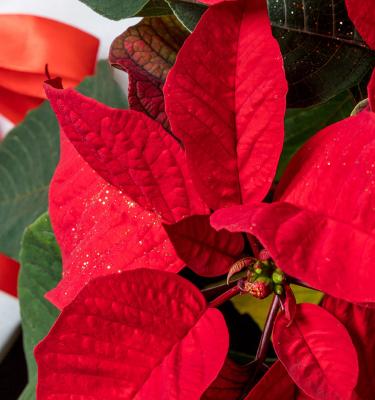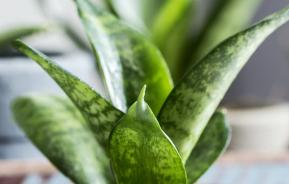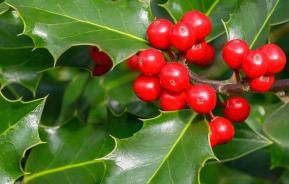General care advice
Most flowering houseplants will last longer if kept cool, such as a constant 10°C to 15°C, although poinsettias, gerbera and Christmas cacti like it a little warmer - around 15°C to 21°C. Avoid chills at night (common if plants are displayed on windowsills) and excessive warmth, especially from central heating radiators or open fires.
Most, but particularly azaleas and cyclamen, are best watered from below by standing the pot in a few centimetres of tepid water, remove and allow to drain before returning to its flowering position. Water azaleas with rainwater or deionised water as they hate limey (hard) water. The compost should be kept moist, allowing the top to slightly dry out before watering and a feed weekly to fortnightly with a liquid houseplant feed while in flower.
Indoor Cyclamen
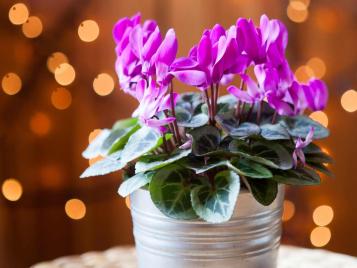
Choose a brightly lit spot away from direct sunlight and heat sources. Completely remove spent flowers with their stem, by carefully picking off at the base or plants may get botrytis disease (grey mould). After flowering, continue watering and feeding until leaves yellow, then reduce watering as the plant becomes dormant for the summer. When new growth appears replace the top few centimetres of compost and start regular watering.
Poinsettia
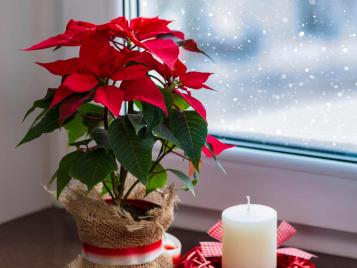
The large red flowers are actually leafy bracts. Although red is the traditional colour, try white, pink and bicolours (marbled) for something different. Poinsettias hate chills and draughts, so position them carefully and avoid plants from outdoor stalls and have them wrapped with a houseplant sleeve in the shop, this will provide protection while getting them home. Place in a bright spot, but out of burning direct sunlight, and keep the atmosphere humid to prolong bract life, by misting regularly. They can get leggy so hard prune and report in April.
Amaryllis (Hippeastrum)
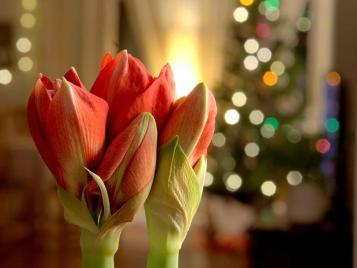
Plant amaryllis bulbs in a pot 5cm wider than the diameter of the bulb, with one-third to half of the bulb above compost level. After potting, place in a brightly lit spot, water sparingly at first, but increase watering as the foliage develops. To ensure flowering in subsequent years, keep the compost moist and feed when the leaves are green, but reduce watering when they turn yellow, and stop altogether when they are dead. Plants prefer to be potbound with their roots restricted.
Indoor Azalea
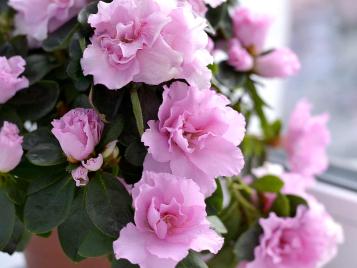
Indoor azaleas need cool conditions, a position out of direct sunlight and moist compost. A west or east-facing windowsill is ideal. Being ericaceous, water with rainwater or deionised water in limey (hard water) areas, and stand on a pebble tray to maintain humidity. In mid-April, repot in ericaceous compost and feed weekly with a high potash liquid feed. Plants can be stood outdoors in a cool, shady site for the summer, kept moist and fed regularly. Then bring them back indoors before the first autumn frosts.
Christmas Cactus
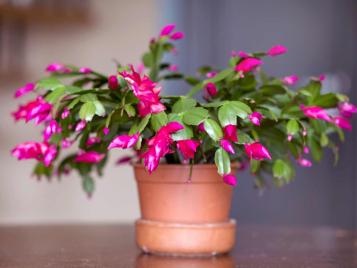
Christmas cacti need a bright position, out of direct sunlight. Avoid overwatering as this can cause the flower buds to drop. Plants don't like a dry atmosphere, so place the pot on a tray of pebbles and keep these moist. After flowering, let the plant rest by withholding water for six to eight weeks. When new growth appears, re-pot or topdress with fresh compost and start watering. Once flower buds form, make sure not to move the plant or the buds may drop.
Hyacinth
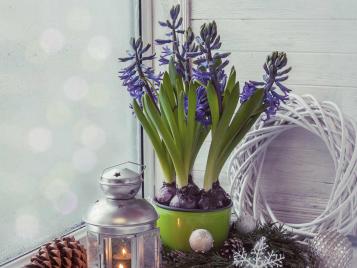
Specially prepared hyacinth bulbs are forced into growth to produce early, winter displays. Their fragrance is gorgeous and will infuse the whole house. Keep plants cool and the compost moist. The bulbs can't be used to flower again in winter, but when flowering has finished, the plants can be hardened off by gradually acclimatising them to outdoor conditions and planted in the garden. They will then flower normally in subsequent springs.
Gerbera
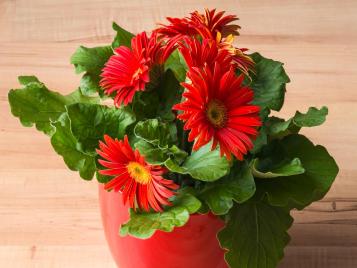
Gerberas are brightly coloured and produce lots of large flowers. They are best used as temporary colour providers, brightening up the home for several weeks when in flower. Choose a location that provides full sunlight. Don't keep them too warm or they will wilt and stop blooming, and mist plants daily or stand on trays of moist pebbles to maintain humidity. After flowering, grow them in pots on the patio where they should flower over summer.
Kalanchoe (Flaming Katy)
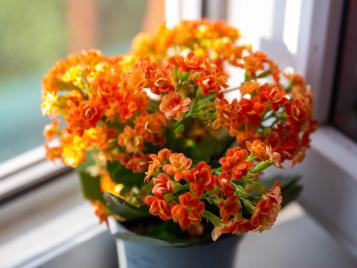
Flaming Katy needs a cool but sunny position. Although easy to grow, getting them to flower in subsequent years can be a challenge - but one worth trying. Beginning in mid-September, like poinsettias, plants need 14 hours of continuous darkness every day for two weeks to promote flowers (or the bracts in the case of poinsettias). Keep the compost moist, but don't feed during this time. Then put them in their normal flowering position, and keep your fingers crossed!
Winter Cherry (Solanum)
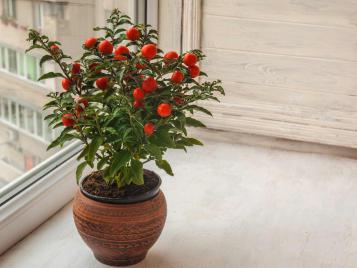
Choose a cool, bright spot on a sunny windowsill and avoid a dry atmosphere (mist daily) and overwatering. After the berries are past their best, prune stems back by half and reduce watering, so that the compost is almost dry.
In April, repot and water and feed normally. Plants will flower in summer and produce new berries for winter. You'll get better plants and berries if plants are stood outside for the summer, but bring them back indoors in autumn before the first frosts.
